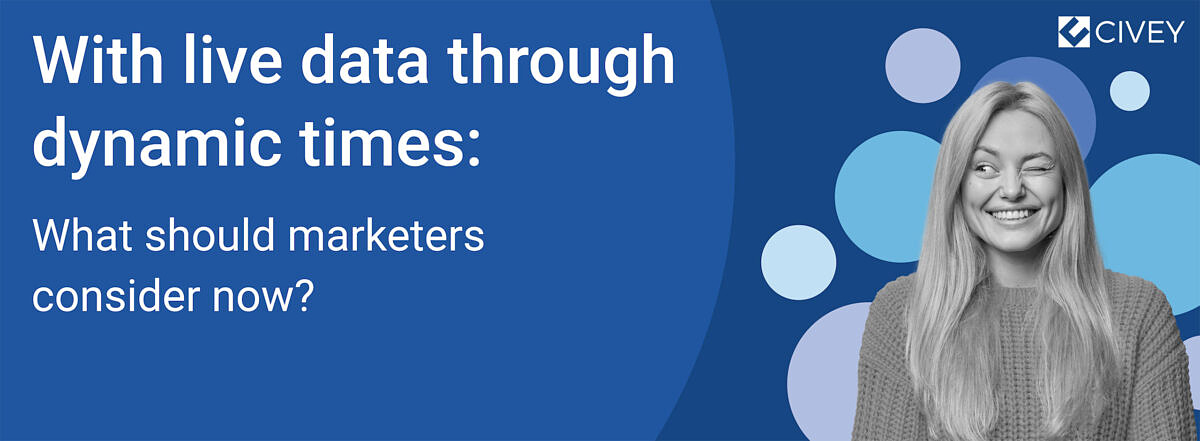With live data through dynamic times: What should marketers consider now?
Less organic in the shopping cart, balcony instead of Corsica, kitchen stove instead of restaurant - in these challenging times, preferences and purchasing behavior change in a short time.

Two-thirds of Germans have adjusted their consumption in response to high inflation. There is no sign of price increases abating quickly. On the contrary, the energy crisis is more likely to exacerbate inflation in the winter. So sitting out is not an option for marketers! They must adapt to changing customer behavior. Inflation is also affecting marketing spend. The pressure to be as efficient as possible in the use of all budgets has therefore tended to increase. So what do marketers need to keep in mind?
Real-time analyses instead of reports from yesterday
Crises sharpen the senses and many things are reviewed: Processes are optimized and made more efficient. Reliable and digitally collected real-time data on the market, brand, product and target group offer a major increase in efficiency in marketing. For marketers to use their budgets efficiently in these dynamic times, live data on their specific customer groups is absolutely essential. They provide the basis for target group analysis, media budget management, and campaign measurement so that campaigns can be optimized in an agile manner at any point in time. Therefore, Civey has developed an innovative data collection in Germany’s largest online panel to provide you with exactly this data in real time.
It is essential that the data is as recent as possible. This is the only way to identify changes at an early stage and respond quickly and actively. For example, when buying food, consumers currently pay more attention to price and taste than to organic quality or sustainability. In marketing, the focus should therefore be on the taste aspect of organic products or discount campaigns should be launched.
New times, new target groups
It is also important to have comprehensive data depth in order to analyze specifically where and with whom purchasing behavior is changing. An analysis down to small regional areas can be used to target regional marketing more effectively. In which counties does inflation play a major role in people’s minds, and in which does it not? Grouping the figures by age can be likewise helpful: Are the younger generations adjusting their consumer behavior more than the best agers? With such comprehensive data depth, marketers can better identify who they should reach and where: Ideally, this will even reveal new target groups.
The right time to start a campaign
In addition, the development of a campaign must happen more quickly in dynamic times, but the starting point should also be planned precisely. How is buying behavior changing right now? When is there a high level of attention for the topic in the important target groups and what are the best touchpoints? Continuous real-time data provides monitoring over a longer period of time and thus offers deep insights into the development of customer preferences. In our example, this would mean being able to measure exactly when and if food shopping priorities change. In these times of rapid change, it is crucial for budget and success that marketers find the right timing for their campaigns.
The examples show: Those who still rely on analog data in marketing, which is only available with a time delay, are wasting time and money. In highly dynamic times, companies need to be able to adapt their marketing quickly and target it more effectively – this is generally more successful on the basis of up-to-date and clearly prepared data. Civey will explain a practical example in more detail at DMEXCO. Together with Moritz Möller from Veganz – the brand for plant-based foods – the tech company will show how data can provide the right answers in these dynamic times.





